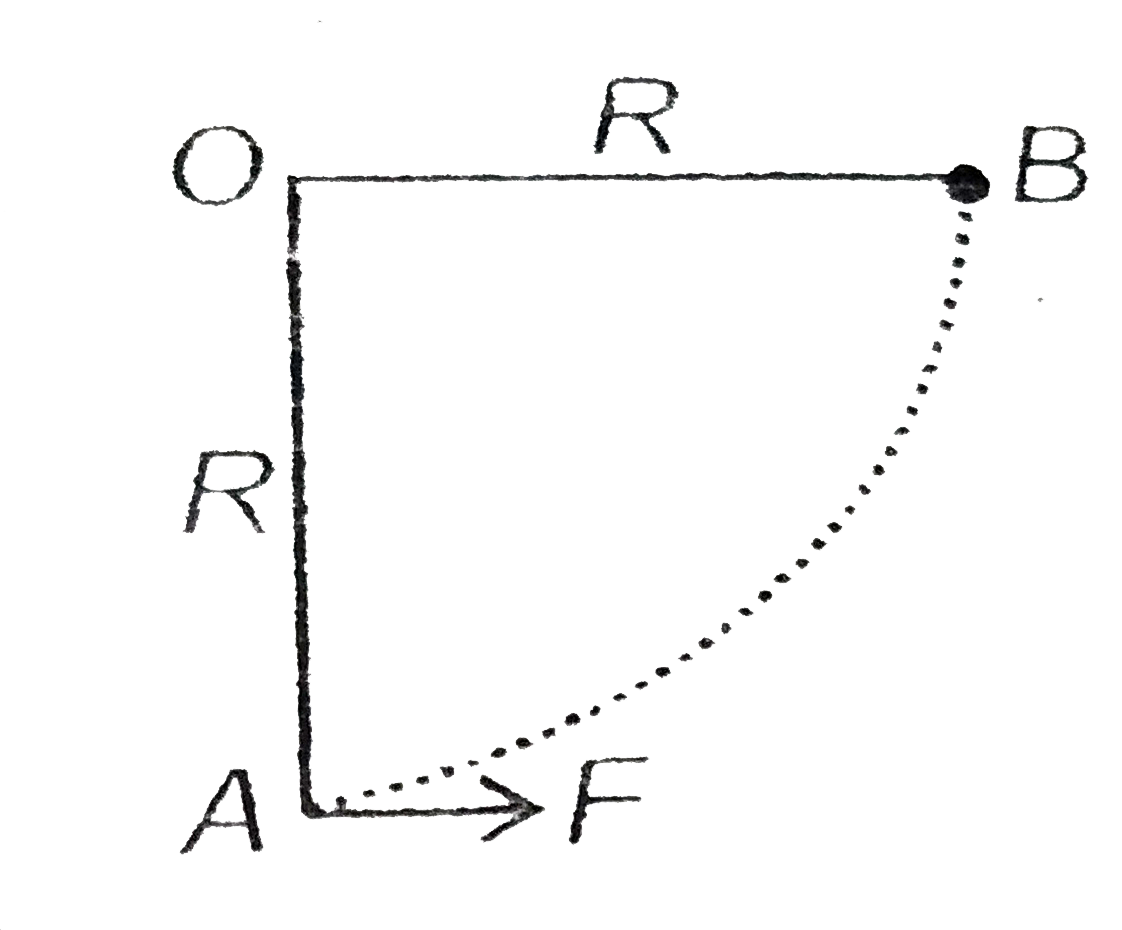The velocity acquired by a mass m in travelling a certain distance d starting from rest under the action of a constant force is directly proportional to :-
√m
Independent of m
1√m
m
The correct Answer is:C
To solve the problem, we need to analyze the relationship between the velocity acquired by a mass m while traveling a distance d under the influence of a constant force. We will derive the expression step by step.
1. Identify the Given Information:
- Mass of the object: m
- Initial velocity: u=0 (starting from rest)
- Final velocity: v
- Distance traveled: s=d
- Force acting on the object: F (constant)
2. Use Newton's Second Law:
According to Newton's second law, the force acting on an object is equal to the mass of the object multiplied by its acceleration:
F=m⋅a⇒a=Fm
where a is the constant acceleration.
3. Use the Kinematic Equation:
Since the object starts from rest, we can use the kinematic equation that relates final velocity, initial velocity, acceleration, and distance:
v2=u2+2as
Substituting u=0 and s=d:
v2=0+2ad⇒v2=2ad
4. Substitute the Expression for Acceleration:
Now, substitute a=Fm into the equation:
v2=2(Fm)d
Simplifying this gives:
v2=2Fdm
5. Express Velocity in Terms of Mass:
To find the relationship of v with respect to m, we take the square root of both sides:
v=√2Fdm
6. Identify the Proportionality:
From the equation v=√2Fdm, we can see that:
v∝1√m
This means that the velocity acquired by the mass is inversely proportional to the square root of the mass.
Conclusion:
The velocity acquired by a mass m in traveling a distance d starting from rest under the action of a constant force is directly proportional to 1√m.
- Mass of the object: m
- Initial velocity: u=0 (starting from rest)
- Final velocity: v
- Distance traveled: s=d
- Force acting on the object: F (constant)
According to Newton's second law, the force acting on an object is equal to the mass of the object multiplied by its acceleration:
F=m⋅a⇒a=Fm
where a is the constant acceleration.
Since the object starts from rest, we can use the kinematic equation that relates final velocity, initial velocity, acceleration, and distance:
v2=u2+2as
Substituting u=0 and s=d:
v2=0+2ad⇒v2=2ad
Now, substitute a=Fm into the equation:
v2=2(Fm)d
Simplifying this gives:
v2=2Fdm
To find the relationship of v with respect to m, we take the square root of both sides:
v=√2Fdm
From the equation v=√2Fdm, we can see that:
v∝1√m
This means that the velocity acquired by the mass is inversely proportional to the square root of the mass.
The velocity acquired by a mass m in traveling a distance d starting from rest under the action of a constant force is directly proportional to 1√m.
Topper's Solved these Questions
- NEWTONS LAWS OF MOTIONBOOK - ALLENCHAPTER - NEWTONS LAWS OF MOTIONEXERCISE - EXERCISE-III
28 Videos
- NEWTONS LAWS OF MOTIONBOOK - ALLENCHAPTER - NEWTONS LAWS OF MOTIONEXERCISE - EXERCISE-I
52 Videos
- NEWTON'S LAWS OF MOTION & FRICTIONBOOK - ALLENCHAPTER - NEWTON'S LAWS OF MOTION & FRICTIONEXERCISE - EXERCISE (JA)
4 Videos
- RACEBOOK - ALLENCHAPTER - RACEEXERCISE - Basic Maths (Wave Motion & Dopplers Effect) (Stationary waves & doppler effect, beats)
24 Videos
Similar Questions
The KE acquired by a mass m in travelling a certain distance s, starting from rest, under the action of a constant force is directly proportional to :
View SolutionThe K.E. acquired by a mass m in travelling a certain distance d, starting from rest, under the action of a constant force is directly propotional to
View Solution
Knowledge Check
The kinetic energy acquired by a mass m after travelling a fixed distance from rest under the action of constant force is
Adirectly proportional √mBinversely proportional to √mCdirectly proportional to m.Dindependent of m.A particle of mass 0.1 kg is subjected to a force which is directly proportional to the distance x. the work done by the force is directly proportional to
AxBx3Cx3/2Dx2
The kinetic energy acquired by a mass m travelling a certain distance d, starting from rest, under the action of a force F such that the force F is directly proportional to t is
View SolutionA block of mass m is taken from A to B under the action of a constant force F. Work done by this force is

View SolutionA particle of mass m moves from rest under the action of a constant force F which acts for two seconds. The maximum power attained is
View SolutionA constant force acts on a mass m at rest. Velocity acquired in travelling a fixed distance is directly proportional to :
View SolutionA cart loaded with sand having total mass m0=1800kg moves on a straight horizontal road starting from rest under the action of a force of 120N. The sand spills through a small hole hole in the bottom at a rate of 0.5 kg/sec. What will be the velocity of cart after 20 min?
View SolutionEngine of car of mass m supplies a constant power P. Starting from rest at an instant of time, then
View Solution
